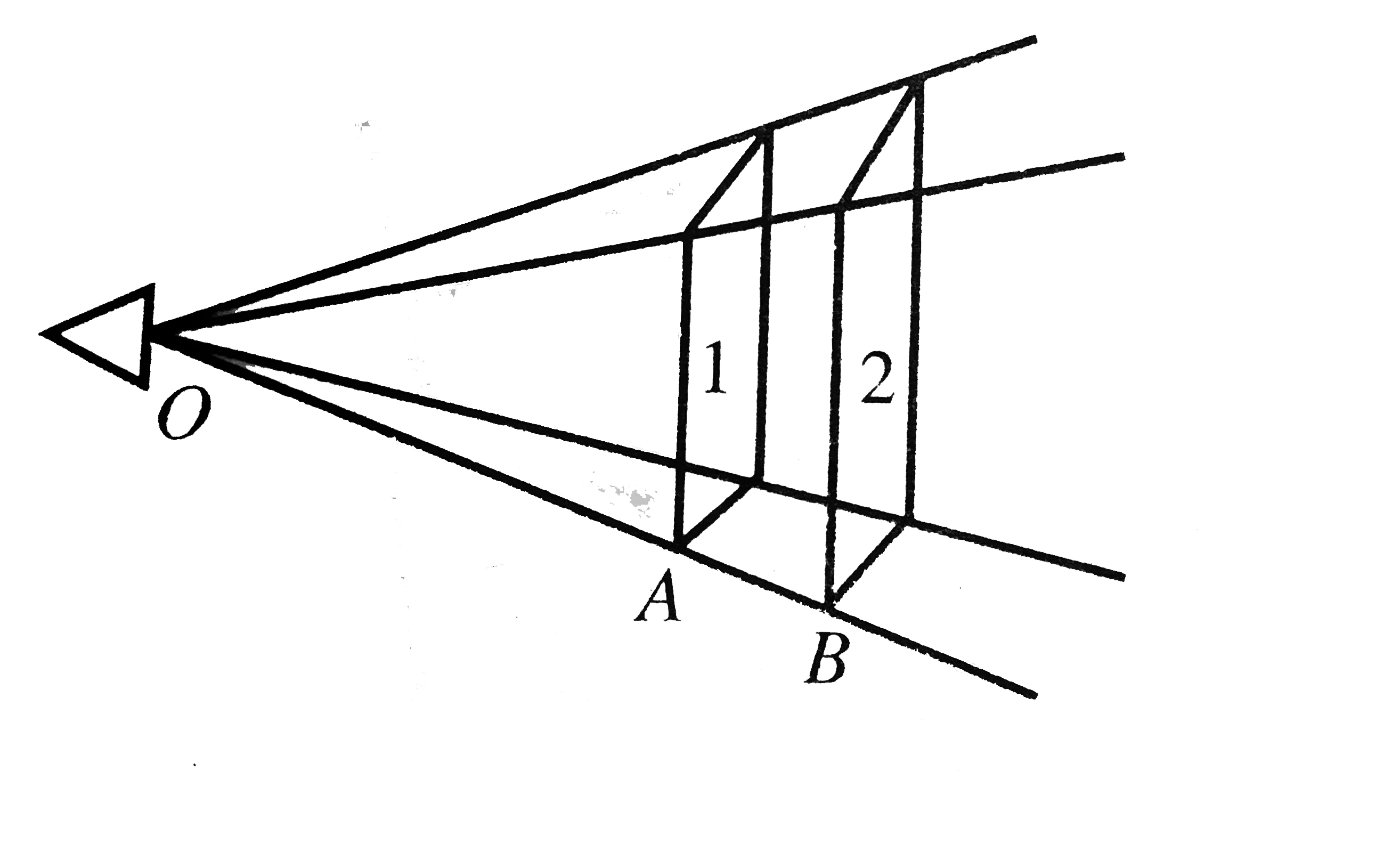Two moving coil meters and have the following particulars:
, , , ,
, , ,
(The spring constants are identical for the two metres). Determine the ratio of (a) current sensitivity and (b) voltage sensitivity of and .
To solve the problem, we need to determine the ratio of current sensitivity and voltage sensitivity of two moving coil meters, M1 and M2.
Given Data:
- For M1:
- R1=10Ω
- N1=30
- A1=3.6×10−3m2
- B1=0.25T
- For M2:
- R2=14Ω
- N2=42
- A2=1.8×10−3m2
- B2=0.50T
Step 1: Current Sensitivity Calculation
The formula for current sensitivity Is for a moving coil meter is given by:
Is=N⋅B⋅Ak⋅T
Since the spring constants k are identical for both meters, we can express the ratio of current sensitivities as:
Is2Is1=N2⋅B2⋅A2N1⋅B1⋅A1
Substituting the values:
Is2Is1=42⋅0.50⋅1.8×10−330⋅0.25⋅3.6×10−3
Calculating the numerator:
42⋅0.50⋅1.8×10−3=42⋅0.9×10−3=37.8×10−3
Calculating the denominator:
30⋅0.25⋅3.6×10−3=30⋅0.9×10−3=27×10−3
Thus, the ratio becomes:
Is2Is1=37.8×10−327×10−3=37.827=75
Step 2: Voltage Sensitivity Calculation
The formula for voltage sensitivity Vs is given by:
Vs=N⋅B⋅Ak⋅T⋅R
Thus, the ratio of voltage sensitivities is:
Vs2Vs1=N2⋅B2⋅A2N1⋅B1⋅A1⋅R1R2
Substituting the values:
Vs2Vs1=42⋅0.50⋅1.8×10−330⋅0.25⋅3.6×10−3⋅1014
We already calculated the first part:
42⋅0.50⋅1.8×10−330⋅0.25⋅3.6×10−3=75
Now, calculating the resistance ratio:
R1R2=1014=57
Thus, the voltage sensitivity ratio becomes:
Vs2Vs1=75⋅57=1
Final Answers:
(a) The ratio of current sensitivity Is2Is1=75
(b) The ratio of voltage sensitivity Vs2Vs1=1
- For M1:
- R1=10Ω
- N1=30
- A1=3.6×10−3m2
- B1=0.25T
- R2=14Ω
- N2=42
- A2=1.8×10−3m2
- B2=0.50T
The formula for current sensitivity Is for a moving coil meter is given by:
Is=N⋅B⋅Ak⋅T
Since the spring constants k are identical for both meters, we can express the ratio of current sensitivities as:
Is2Is1=N2⋅B2⋅A2N1⋅B1⋅A1
Is2Is1=42⋅0.50⋅1.8×10−330⋅0.25⋅3.6×10−3
42⋅0.50⋅1.8×10−3=42⋅0.9×10−3=37.8×10−3
30⋅0.25⋅3.6×10−3=30⋅0.9×10−3=27×10−3
Is2Is1=37.8×10−327×10−3=37.827=75
The formula for voltage sensitivity Vs is given by:
Vs=N⋅B⋅Ak⋅T⋅R
Thus, the ratio of voltage sensitivities is:
Vs2Vs1=N2⋅B2⋅A2N1⋅B1⋅A1⋅R1R2
Vs2Vs1=42⋅0.50⋅1.8×10−330⋅0.25⋅3.6×10−3⋅1014
42⋅0.50⋅1.8×10−330⋅0.25⋅3.6×10−3=75
R1R2=1014=57
Vs2Vs1=75⋅57=1
(a) The ratio of current sensitivity Is2Is1=75
(b) The ratio of voltage sensitivity Vs2Vs1=1
Topper's Solved these Questions
Similar Questions
Knowledge Check
Two moving coil metres M1andM2 have the following particular R1=10Ω,N1=30,A1=3.6×10−3m2,B1=0.25T,
R2=14Ω,N2=42,A2=1.8×10−3m2,B2=0.50T
The spring constants are identical for the two metres. What is the ratio of current sensitivity and voltage sensitivity of M2 toM1?A1.4, 1B1.4, 0C2.8, 2D2.8, 0

In the figure shown below, a source of sound having power 12×10−6W is kept at O, which is emitting sound waves in the directions as shown. Two surfaces are labelled as 1 and 2 having areas A1=2×103m2 and A2=4×103m2, respectively
Q. If two persons (having almost same physique) A and B are standing at the location of surfaces 1 and 2, respectively, then who will hear a quiter sound?
View SolutionTwo lines with direction cosines l1,m1,n1andl2,m2,n2 are at righat angles iff (A) l1l2+m1m2+n1n2=0 (B) l1=l2,m1=m2,n1=n2 (C) l1l2=m1m2=n1n2 (D)l1l2=m1m2=n1n2
View SolutionProve that the value of each the following determinants is zero: ∣∣ ∣∣a1la1+mb1b1a2la2+mb2b2a3la3+mb3b3∣∣ ∣∣
View SolutionThe ratio of the sums of m and n terms of an A.P. is m2:n2 .Show that the ratio of mth and nth term is (2m − 1) : (2n − 1) .
View SolutionDesignate the electrons having the following sets of quantum numbers,
(a) n=2,l=0,m=0,s=+12
(b) n=3,l=1,m=+1,s=+12
(c ) n=l,l=0,m=0,s=−12
View SolutionIf m and n are positive integers and f(x)=∫x1(t−a)2n(t−b)2m+1dt,a≠b, then
View Solution
In the figure shown below, a source of sound having power 12×10−6W is kept at O, which is emitting sound waves in the directions as shown. Two surfaces are labelled as 1 and 2 having areas A1=2×103m2 and A2=4×103m2, respectively
Q. Let the areas of the eardrums of persons A and B be AA=2mm2 and AB=4mm2, respectively. Then who will hear a quiter sound?
View Solution
